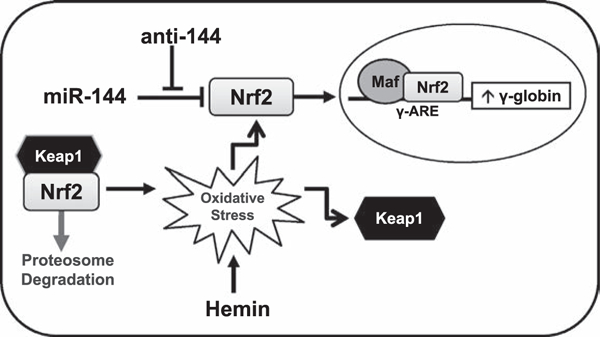Figure 7.

Model of miR-144/NRF2-mediated γ-globin gene silencing. Shown is a model of how miR-144 silences NRF2 gene expression and decreases binding in the γ-globin ARE, leading to gene repression and low HbF levels. Treatment with anti-144 (antagomir) reversed the negative effects of miR-144, enhancing NRF2 levels and translocation to the nucleus, where NRF2 binds the γ-globin ARE to stimulate transcription. Hemin treatment of KU812 cells created an oxidative stress model to recapitulate intracellular conditions in sickle erythrocytes and stimulate NRF2 expression. Recently, we demonstrated NRF2 interaction with its DNA-binding partners MAF to trans-activate γ-globin gene transcription [24].
